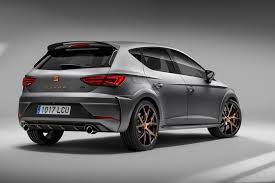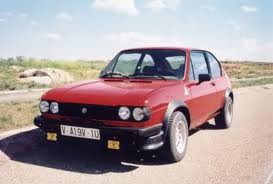
Performance & Classic Car Data

This edition of the Saab 9-3 Viggen 2.3L Turbo is the 5 speed / Manual version and was first brought out in 2001. This was at around the same time as the introduction of the 2001 Lamborghini Diablo GTR 6.0L V12 and the 2002 Ferrari Enzo 6.0 V12.This particular Saab 9-3 has a 2290cc Turbo Petrol powerplant with 4 cylinders in a St formation.
The 9-3 shares its Petrol St4 engine configuration with the likes of the 2019 Ariel Atom 4 2.0 Turbo and the 2013 Caterham 7 620 R 2.0 L Supercharged. If you're looking for other fast cars which share the 9-3's Front Wheel Drive, Hatchback combination then how about the 2022 Volkswagen-VW Golf R Performance 2.0 Turbo or the 2020 Toyota Avalon TRD 3.5 V6.
Weighing in at 1438 kgs (3170 lbs) this makes the Saab 9-3 Viggen 2.3L Turbo in the same weight category as the 2023 Lotus Emira First Edition i4 2.0 Turbo or the give or take 50kg.
![Mini Cooper John Cooper Works Cabrio 2.0 Turbo - [2022] image Mini Cooper John Cooper Works Cabrio 2.0 Turbo - [2022] image](/editionimages/2340.jpg)
The Saab 9-3 shares the same bhp with the 2022 Mini Cooper John Cooper Works Cabrio 2.0 Turbo (228 bhp)
In terms of power the 2290cc 16V St4 engine produces 230 bhp (171 kW) @ 5500 rpm similar to the 2022 Mini Cooper John Cooper Works Cabrio 2.0 Turbo (228 bhp) or the 2020 Audi TT S Turbo 50 TFSI (225 bhp).
The Turbo St4 throws out 258 lb-ft (349.8 Nm) @ 2500 rpm placing it with cars of similar torque performance figures such as the 2023 Toyota Corolla GR Circuit Edition 1.6 Turbo (273 lb-ft) or the 2022 Toyota Corolla GR 1.6 Turbo (273 lb-ft).
If one combines the weight with power or torque performance for the Saab 9-3 you can get a better idea of it's real world performance.
![Seat Ibiza 1.8 Cupra R 20vt - [2001] image Seat Ibiza 1.8 Cupra R 20vt - [2001] image](/editionimages/518.jpg)
The 2001 Seat Ibiza 1.8 Cupra R 20vt (184.9 bhp per ton) has similar Bhp Per Ton stats as the Saab 9-3.
The Saab 9-3 has a Power to weight ratio of 159.9 bhp per ton and 179.4 lb-ft per ton. Bhp Per Ton figures of the 2001 9-3 competing with the 2001 Seat Ibiza 1.8 Cupra R 20vt (184.9 bhp per ton) or the 2022 Hyundai i30 N Performance 2.0 Turbo (184.7 bhp per ton).
If you agree with the late great Carroll Shelby then arguably an even better indicator of potential performance, Torque. Use weight as well and you end up with - Torque per ton, with the Saab 9-3 generating around 179.4 lb-ft per ton. If you're curious as to what other cars have as much torque to weight then look no further than the 2006 Lotus Exige GT3 1.8 16v Supercharged (204.3 lb-ft per ton) or the 1964 Ford Thunderbird 390 Convertible 4th Gen. (204.3 lb-ft per ton).
With a 0-60mph time of 6.20 secs or a 0-100km/h (0-62mph) of 6.4 secs, this made the Saab 9-3 Viggen 2.3L Turbo as fast as the 2019 Toyota Supra SZ-R 2.0 Turbo (6.20 secs) the 2019 Toyota Supra SZ 2.0 Turbo (6.20 secs) the 2017 Volkswagen-VW Arteon 2.0 TDi SCR 4Motion (6.20 secs) the or the 2014 Peugeot 208 Gti 1.6 Turbo 30th (6.20 secs). This Saab 9-3 Viggen 2.3L Turbo is also faster than the 2024 Mazda CX-90 S 3.3 Turbo (6.30 secs) the 2020 Audi A1 Sportback 40 TFSI S tronic S line (6.30 secs) the 2018 Ford Fiesta ST 1.5 Turbo 5 door (6.30 secs) the and the 2018 Ford Fiesta ST 1.5 Turbo (6.30 secs).
When talking about the performance of the Saab 9-3 on the drag strip it can reach a quarter mile in an estimated 14.78 secs @ 92.6 mph. Similar performance down the quarter mile can be found with the the 2004 Honda S2000 2.2i (14.72 secs), the 1986 Ford Sierra RS Cosworth (14.74 secs), and the 2006 Porsche Cayman 2.7 (14.74 secs).
Modern performance cars are often artificially restricted to 155mph. The 2001 version of the Saab 9-3 Viggen 2.3L Turbo has a maximum speed of 160mph.
If maxing out your car on the AutoBahn is your thing and you're wondering what's faster than the 2001 Saab 9-3 Viggen 2.3L Turbo then how about the 2018 Porsche Boxster T 2.0 Turbo PDK 982 (171 mph), the 2018 Porsche Boxster T 2.0 Turbo 982 (171 mph), or the 2013 Jaguar F Type S 3.0 V6 (171 mph).









Alfa-Romeo Alfasud 1.5 Ti QV
Engine: Naturally Aspirated Petrol | 1490cc 8v F4
Top Speed: 112 mph
0-60mph: 10.20 seconds

Chevrolet Camaro ZL1 6.2 V8 Supercharged
Engine: Supercharged Petrol | 6162cc 16v V8
Top Speed: 313.8 kph
0-100kph: 3.6 seconds



















